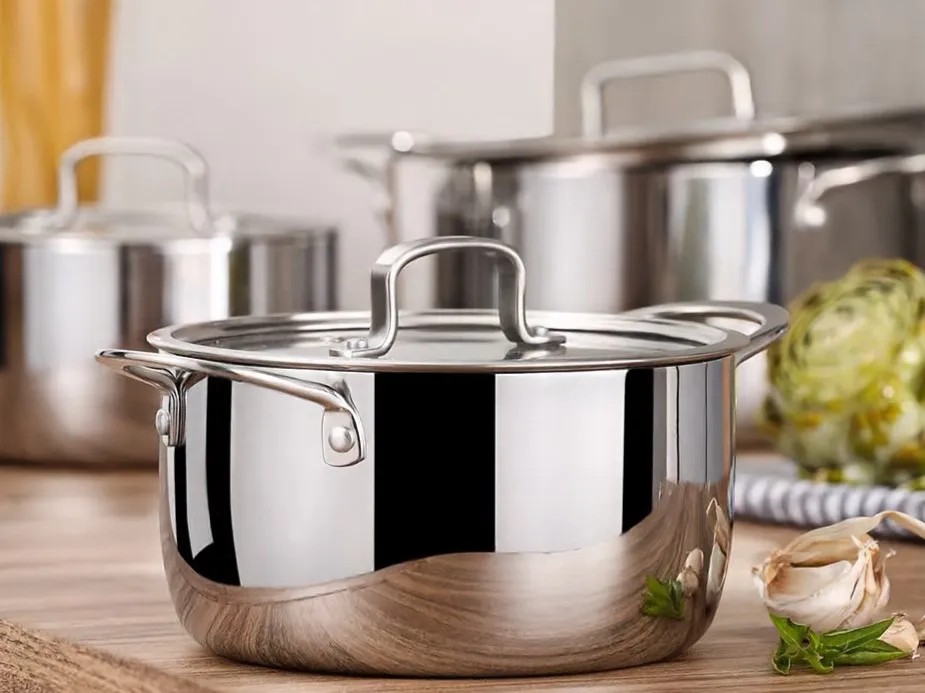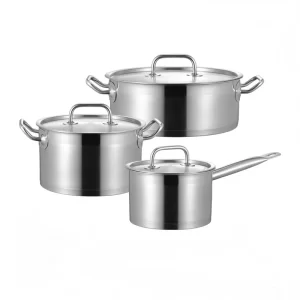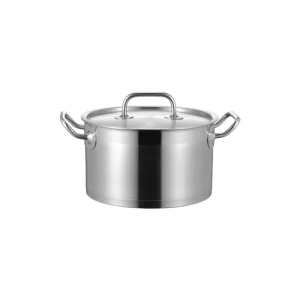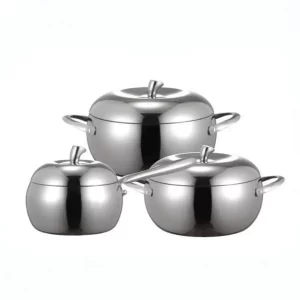In theory, 18-8 stainless steel is non-magnetic, but weak magnetism occurs due to shape changes during processing. Therefore, magnetism is not the only criterion for determining the authenticity or quality of stainless steel.
Many people are accustomed to using magnets to test the authenticity of stainless steel in daily life, believing that “only high-quality stainless steel is not attracted by magnets.” Is this judgment method reliable? What does magnetism mean, especially for 18-8 stainless steel (such as the common 304 material)? This article will analyze the scientific essence of this issue through its composition, process, and practical application.
Table of Contents
ToggleUnderstand the Core Characteristics of 18-8 Stainless Steel
The name of 18-8 stainless steel directly reflects its composition: 18% chromium (Cr) and 8% nickel (Ni), and this precise ratio forms a stable austenite crystal structure. Its characteristics are manifested as:
Corrosion resistance: Chromium element combines with oxygen to form a dense oxide film, isolating external corrosion.
Ductility: The addition of the nickel element makes the metal flexible and easy to process.
Theoretical Non-magnetic: A complete austenite structure does not possess magnetism at room temperature.
Therefore, it is widely used in fields such as food processing equipment and medical devices that require high hygiene and durability. But the question is – why do some 18-8 stainless steel products still exhibit magnetism in actual use?
Basic Characteristics of 18-8 Stainless Steel
18-8 stainless steel is an austenitic stainless steel, named after its composition ratio: containing approximately 18% chromium (Cr) and 8% nickel (Ni). This ingredient ratio endows it with excellent corrosion resistance, high ductility, and non-magnetic characteristics, and is widely used in fields such as tableware, medical equipment, and the food industry.
Key Components and Crystal Structure
- Chromium (Cr): forms an oxide film to prevent corrosion.
- Nickel (Ni): stabilizes the austenite structure and suppresses magnetism.
- Crystal structure: Mainly single-phase austenite at room temperature, theoretically non-magnetic
Why Does 18-8 Stainless Steel Sometimes Exhibit Magnetism?
Although 18-8 stainless steel is theoretically non-magnetic, weak magnetism may occur in practical applications due to the following reasons:
Cold deformation During Processing
Cold processing (such as stamping and stretching) can cause partial transformation of the austenite structure into martensite, which is magnetic. For example, stainless steel cookware or heads may experience weak magnetism in certain areas due to deformation after stamping.
Differences Between Smelting and Heat Treatment
The fluctuation of chemical composition during smelting (such as insufficient chromium or nickel content) may form a small amount of ferrite or martensite structure, thereby introducing magnetism.
External Pollution
If the processing tool is made of carbon steel material, the stainless steel surface may adsorb iron filings due to contact with carbon steel, leading to misjudgment in magnet testing
Does Magnetism Affect the Performance of Stainless Steel?
Corrosion Resistance is not Related to Magnetism
The corrosion resistance of stainless steel mainly depends on the chromium content and the integrity of the oxide film. Even if 18-8 stainless steel has weak magnetism due to processing, its corrosion resistance is still superior to ordinary steel.
Magnetism is not Related to Material Safety
The safety of food-grade stainless steel depends on the migration of heavy metals, not magnetism. For example, 430 stainless steel (containing chromium but no nickel) has strong magnetism, but it is a safe material; Some low-quality 200 series stainless steel (containing manganese), although non-magnetic, may release harmful substances
How to Scientifically Identify 18-8 Stainless Steel?
Labels and Identification
Legitimate products will be labeled with material types such as “18-8”, “304”, or “SUS304”.
Food-grade stainless steel should be labeled with the words’ for use in contact with food ‘.
Professional Testing Methods
Chemical analysis: Detect chromium and nickel content through a spectrometer.
Salt spray test: Verify corrosion resistance performance.
Avoid Relying on Magnet Testing
Magnetic adsorption can only distinguish between ferritic/martensitic stainless steel (such as 430) and austenitic stainless steel (such as 304), but cannot determine the specific material or quality
Application Suggestions for 18-8 Stainless Steel
Prioritize products with less cold processing, such as mirror polished tableware, to reduce magnetic interference.
Based on actual usage scenarios: For the medical and food industries, it is recommended to choose 316 stainless steel (18-10) with high nickel content to enhance corrosion resistance and cope with complex usage environments.
Regular maintenance: Avoid contact with strong acid or chloride ion environments to extend service life.
Summary
In theory, 18-8 stainless steel is non-magnetic, but weak magnetism occurs due to shape changes during processing. Therefore, magnetism is not the only criterion for determining the authenticity or quality of stainless steel. Consumers should combine label identification, professional testing, and comprehensive evaluation of brand reputation to avoid falling into the misconception of ‘no magnetism equals excellence’.
Through scientific understanding, we can not only use stainless steel products correctly but also avoid marketing traps when purchasing, truly achieving a balance between safety and practicality.





